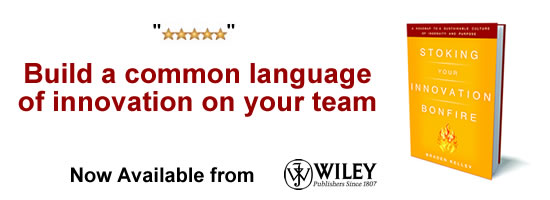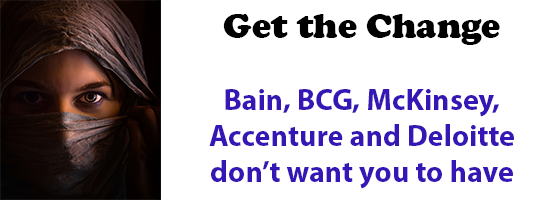
GUEST POST from Geoffrey A. Moore
I recently read an article in ZDnet by Sherin Shibu discussing disruptive innovation, primarily through the lens of Clay Christensen’s work at the Harvard Business School. The article itself is very sound, and yet I found myself disagreeing with it on a number of points. In this blog, I want to interleave what Shibu says (presented in standard font) with my own commentary (inserted in italics) so that readers can develop their own point of view from the interaction.
What is disruptive innovation?
Disruptive innovation theory is a cautionary concept for large, established companies: There’s danger in becoming too good at what you do best. Delivering to the mainstream market is good and all, but a disruptor could target a market underserved by your current product with a new business model.
For me, disruptive innovation has a much bigger footprint because it also underlies virtually all venture capital investment. Its fundamental promise is to release an enormous amount of trapped value by reengineering an established system or process. The reason it is a cautionary concept for large established companies is that they are the custodians of the legacy systems and processes that are trapping the value. Yes, they can reduce the overhead by optimizing what they have, but no, they cannot compete with a categorically better way of doing things.
Harvard Business School professor Clayton Christensen developed the concept of disruptive innovation in the 1990s with his groundbreaking book The Innovator’s Dilemma, and the theory became wildly popular in the decades to follow. But in some respects it has become a victim of its own success: “Despite broad dissemination, the theory’s core concepts have been widely misunderstood and its basic tenets frequently misapplied,” notes The Harvard Business Review.
Disruptive innovation is a process by which entrepreneurs break into a low-end or new market and create business models that are different from existing ones in those markets. Disruption has occurred when their business model becomes mainstream.
So, a new company targets an overlooked customer base — and manages to deliver a better product at a lower price point. At first, the incumbents don’t take the threat seriously, which allows the potential disruptors to gain a foothold. Then the disruptors target the incumbents’ mainstream customers. If the potential disruptors create something that the mainstream adopts in volume, they have successfully disrupted the market.
I think this reading of the model overemphasizes the need to attack the low end of the market. Yes, that is a proven path, but it is not the only one. The iPhone disrupted from the high end, for example, as has Tesla.
What is disruptive innovation not?
Defining disruptive innovation isn’t easy and not everyone is going to agree on every example. Classic disruptive innovation should not simply describe just any situation of upheaval. If a new company shakes things up a bit for incumbent competitors, that scene is not necessarily one of disruptive innovation — that could simply be a breakthrough. In order for this theory to have power and be used as an analytical and predictive model, it needs to be precisely defined.
My definition of disruptive innovation is one that overthrows and is incompatible with the existing business model or operating model of an industry. In the case of the iPhone, it was Apple’s ability to go over the top of the carrier to provide products and services directly to the consumer. In the case of Tesla, it is its ability to bypass the dealership model not only in sales but in services as well.
Christensen, for example, argued that Uber is not a disruptive innovator according to his definition. It fails to meet two requirements, in that it did not start in a low-end or new market. Instead, it built a name for itself in a mainstream market and then started drawing unserved customers with less expensive solutions. And being less expensive or creating an app to hail rides sustains the existing model rather than disrupts.
This is just wrong and shows the limitations of the “start at the low end” concept. Uber reengineered both the operating model and the business model of on-demand car transportation, allowing consumers to call a taxi to themselves, and allowing Uber to build a fleet of cars and drivers at no capital expense.
Not everyone thinks that’s the case and other perspectives can be found that argue Uber actually is a disruptive innovator. From this perspective, Uber started with a low-market foothold by offering on-demand black car services. It was only when the startup introduced UberX, a low-end market offering, that it was able to move into the mainstream.
What counts as disruption is up for debate, especially as Christensen’s theory is applied to shifting contexts.
In the case of Uber, focusing on the low end simply misses the point.
Why is it important to define disruptive innovation?
Disruption isn’t a fixed point; it’s the evolution of a product or service from the fringes of customers to the mainstream. It’s important to define it this way because then it becomes more about the experimental nature of the process than about the output. See, disruptive innovations don’t always succeed and not every successful company is a disruptor. The process is about building new business models previously unseen in the target industry and appealing to a more niche customer base at first.
In my view, disruptive innovation is a function of a breakthrough technology intersecting with a pool of trapped value, enabling the reengineering of a system or process that eliminates one or more whole categories of spend in its value chain. It is a categorical innovation as opposed to a product or marketing innovation.
Is disruptive innovation the primary way innovation operates?
No, it is not the primary factor of innovation. According to HBR, “disruption theory does not, and never will, explain everything about innovation specifically or business success generally.” It does, however, help predict which businesses will succeed and it provides a solid foundation for further research – it’s captured academic attention for 27 years.
I agree with the point that disruptive innovation is not the primary type. Most innovation is sustaining, meaning that it improves an existing system rather than overthrowing it—evolution, not revolution. What I disagree with wholeheartedly, on the other hand, is the notion that the theory helps predict which businesses will succeed. Historically, the advantage has gone to start-ups because they are unconflicted in their commitment to the new way. Established enterprises, however, have learned that they can neutralize start-ups if they are willing to be fast followers. Microsoft’s Azure is a superb example of a company that has done this. Disney’s response to Netflix is another good example, and it appears as if General Motors is on a comparable path toward neutralizing Tesla.
What is an example of disruptive innovation?
Netflix was around since 1997, and at first, it didn’t appeal to Blockbuster’s core clientele. Renting movies usually happened in person, and Netflix was all online. Plus, Netflix took a few days to deliver movies because selections came through the mail. Blockbuster could easily ignore Netflix because it didn’t have the brick-and-mortar infrastructure needed to dominate the market at that time.
This glosses over what was the initial disruptive innovation that Netflix provided with its home delivery model based on DVDs. The key differentiator at the beginning was designing out late fees.
Over time though, as streaming technology developed, Blockbuster’s target clients were drawn toward Netflix. The same impulsiveness that made renting a movie right away more desirable than getting a movie a few days later translated into wanting to watch movies with a click of a mouse instead of going to a physical location to rent a DVD. Disruptive innovation technology, in this case, streaming, goes hand in hand with implementing innovation.
There is another story playing out in Netflix’s transition from DVD shipping to streaming. It required the company to disrupt itself. This is an extraordinary ask, as most successful disruptive innovations attack someone else’s profit pool, not one’s own. Reed Hastings deserves enormous credit for leading the company through this change, and I would encourage the academy to focus its research lens on how in the world he was able to do so when so many CEOs have fallen short.
Are there any disruptive innovation technologies to keep an eye on?
Online learning is a technology to watch because it’s reaching a population that in-person learning can’t reach at a lower price point.
The main technologies to keep an eye on are the ones that tackle an underserved market and have the potential to expand their offerings to appeal to the mainstream.
Something like autonomous vehicles, for example, can seem innovative, but they aren’t disruptive according to the theory because they’ll be quickly absorbed into existing industries. The incumbent advantage is strong.
The important thing to remember is that innovation does not always lead to disruption.
I strongly support the idea that online education delivery has the power to disrupt the education market—again, a breakthrough technology intersecting with a boatload of trapped value. I think the point about autonomous vehicles is interesting as well because I agree they will be absorbed into the existing industries. But while they may not disrupt the automotive industry, I do think they can reengineer transportation and logistics.
Overall, I support Shibu’s main thesis which is that we have come to take disruptive innovation for granted and have become careless with how we apply the term. And while we part ways on how best to apply it, I still endorse Clay’s breakthrough insights in The Innovator’s Dilemma, which had a huge impact on a whole generation of companies in Silicon Valley.
That’s what I think. What do you think?
Image Credit: Pexels
 Sign up here to join 17,000+ leaders getting Human-Centered Change & Innovation Weekly delivered to their inbox every week.
Sign up here to join 17,000+ leaders getting Human-Centered Change & Innovation Weekly delivered to their inbox every week.

![]() Sign up here to join 17,000+ leaders getting Human-Centered Change & Innovation Weekly delivered to their inbox every week.
Sign up here to join 17,000+ leaders getting Human-Centered Change & Innovation Weekly delivered to their inbox every week.











